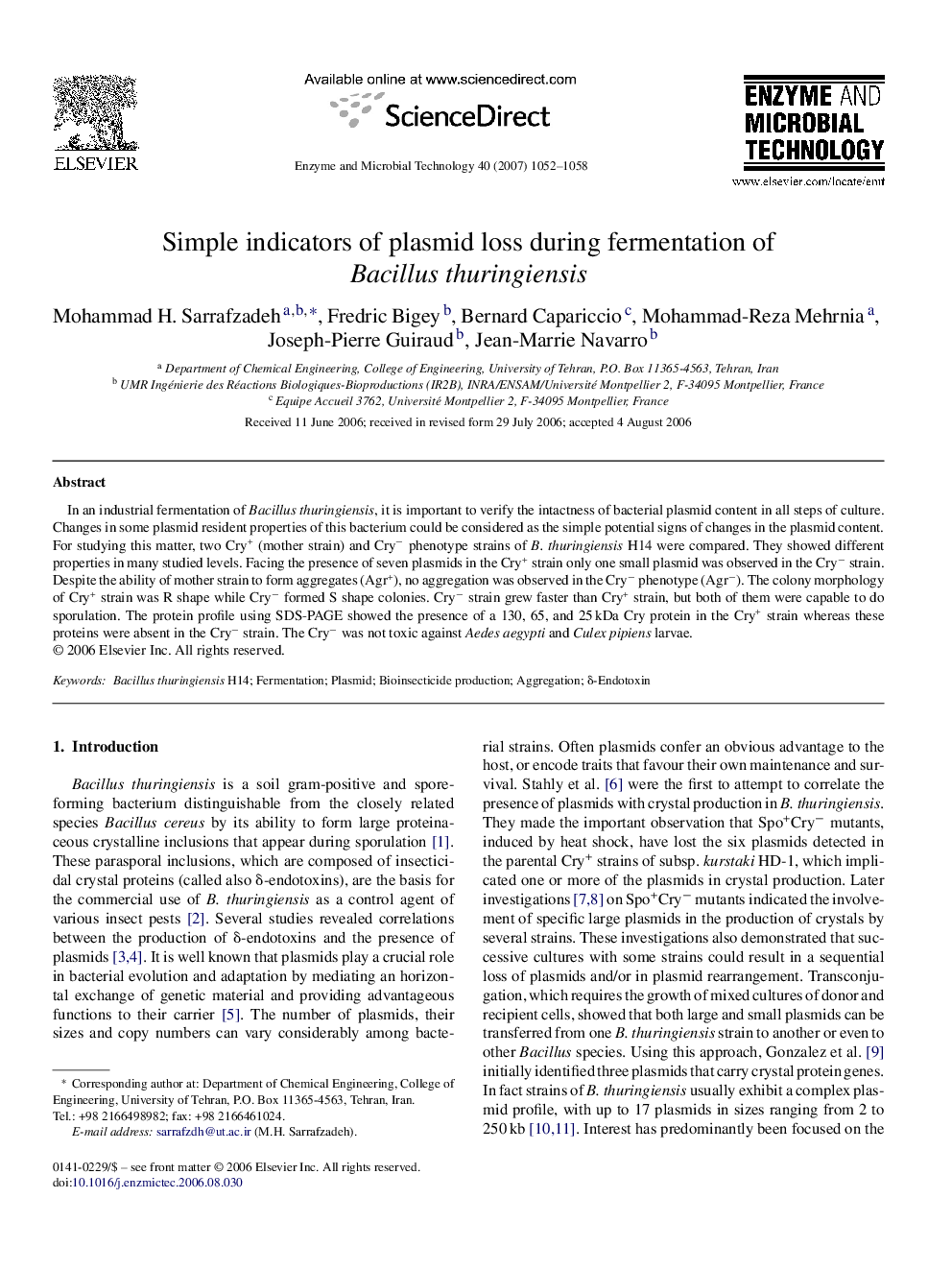| کد مقاله | کد نشریه | سال انتشار | مقاله انگلیسی | نسخه تمام متن |
|---|---|---|---|---|
| 18142 | 42713 | 2007 | 7 صفحه PDF | دانلود رایگان |

In an industrial fermentation of Bacillus thuringiensis, it is important to verify the intactness of bacterial plasmid content in all steps of culture. Changes in some plasmid resident properties of this bacterium could be considered as the simple potential signs of changes in the plasmid content. For studying this matter, two Cry+ (mother strain) and Cry− phenotype strains of B. thuringiensis H14 were compared. They showed different properties in many studied levels. Facing the presence of seven plasmids in the Cry+ strain only one small plasmid was observed in the Cry− strain. Despite the ability of mother strain to form aggregates (Agr+), no aggregation was observed in the Cry− phenotype (Agr−). The colony morphology of Cry+ strain was R shape while Cry− formed S shape colonies. Cry− strain grew faster than Cry+ strain, but both of them were capable to do sporulation. The protein profile using SDS-PAGE showed the presence of a 130, 65, and 25 kDa Cry protein in the Cry+ strain whereas these proteins were absent in the Cry− strain. The Cry− was not toxic against Aedes aegypti and Culex pipiens larvae.
Journal: Enzyme and Microbial Technology - Volume 40, Issue 5, 3 April 2007, Pages 1052–1058